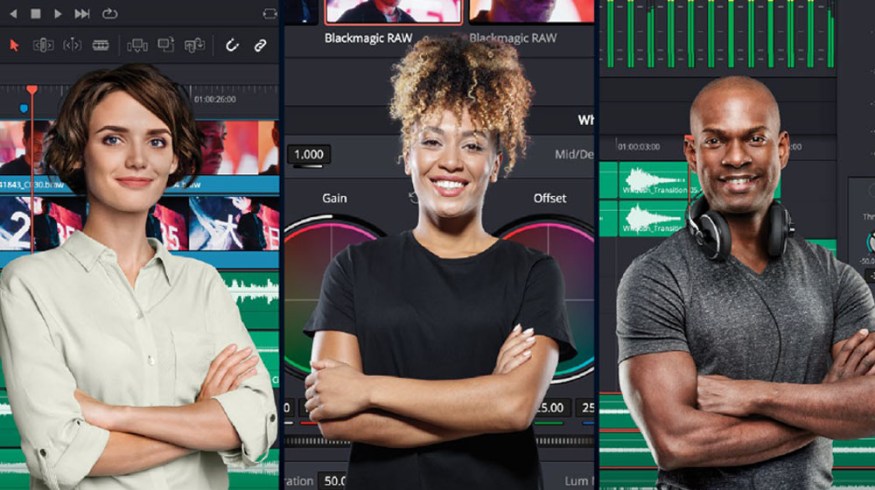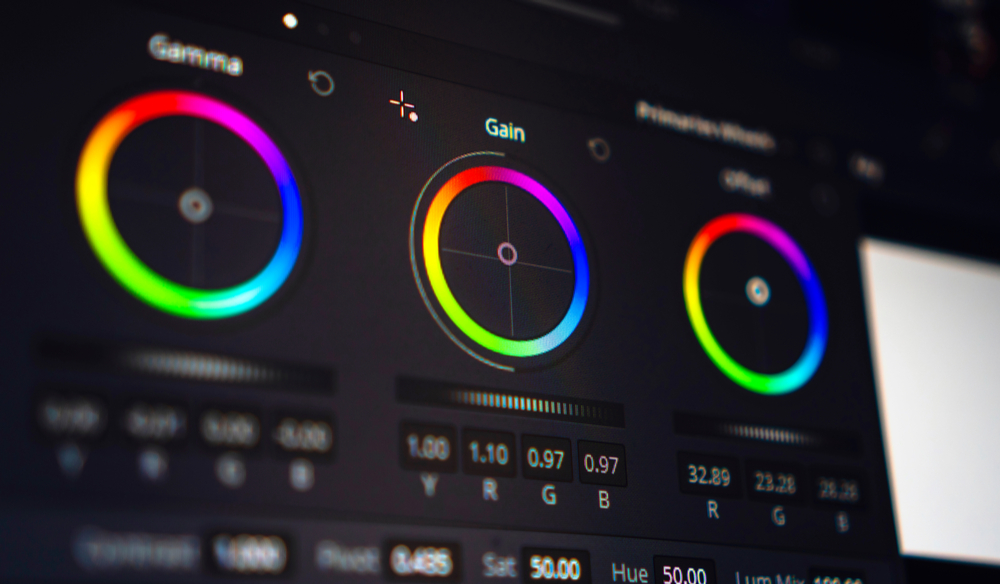
DaVinci Resolve 18’s System Requirements
Let’s look at this major advancement in DaVinci Resolve and tackle all the specs you need to know to work with it.
When compared to the other non-linear editing platforms out there, Resolve has always been a GPU-reliant program, whereas others were more “CPU” focused. However, through recent updates with Premiere and FCPX (I’m honestly not sure what FCPX is doing over there in the corner), other programs are also starting to catch up to DaVinci Resolve.
DaVinci Resolve 18 System Requirements
We will explain what these components are and some of the recommended products currently on the market. But, if you’re looking for the requirements and then dip out, let’s make that easier for you.
Mac
Let’s look at the requirements if you’re using a Mac OS:
- macOS 11 Big Sur
- 8 GB of system memory. 16 GB when using Fusion
- Blackmagic Design Desktop Video version 12.0 or later
- Integrated GPU or discrete GPU with at least 2 GB of VRAM.
- GPU which supports Metal or OpenCL 1.2.
Back last year, with the 17.3 updates, Blackmagic included a massive improvement in Mac compatibility and rendering capabilities. For Macs with the M1 chip, Resolve will now work an apparent three times faster than before.
In their press statement on the update, Blackmagic said this:
With this massive speed increase, customers can now play back, edit, and grade 4K projects faster, and can even work on 8K projects on an Apple M1 notebook. The new processing engine uses tile-based rendering . . . also supports a new option on Mac computers with M1 for H.265 hardware encoding. Customers can choose to prioritize speed vs. quality when rendering, further improving render times up to 65%.
– Blackmagic
Windows
Now, let’s take a peep at the system requirements if you’re using Windows:
- Windows 10 Creators Update.
- 16 GB of system memory. 32 GB when using Fusion
- Blackmagic Design Desktop Video 10.4.1 or later
- Integrated GPU or discrete GPU with at least 2 GB of VRAM
- GPU which supports OpenCL 1.2 or CUDA 11
- NVIDIA/AMD/Intel GPU Driver version – As required by your GPU
Linux
Let’s take a look at the system requirements for Linux:
- CentOS 7.3
- 32 GB of system memory
- Blackmagic Design Desktop Video 10.4.1 or later
- Discrete GPU with at least 2 GB of VRAM
- GPU which supports OpenCL 1.2 or CUDA 11
- NVIDIA/AMD Driver version – As required by your GPU
Now, there are, of course, two versions of DaVinci Resolve. The free version and the paid studio version that hosts several additional plugins as well as operational functions that you can’t do in the free version. While the studio version is operationally stronger, you may be pleased to know the minimum system requirements remain the same.

While this isn’t exactly an article about GPUs and CPUs, it’s important to understand how these tools work in relation to what Resolve needs from your computer in order to perform to the best of its ability.
So, let’s go over the basics and where to look for quality products, so you can have an idea of where to start or what you need. Then, we’ll talk about what Resolve requires from you.
What Is a CPU?

A CPU (central processing unit) resides attached to your computer’s motherboard. CPUs are essentially chips that receive information from different parts of your computer, then performs somewhat of a calculation. So, it takes in information, figures out what to do with it, then does it. Still with me? It’s the brain, essentially.
In the context of this specific situation, the CPU comes second when using Resolve. However, its GPU-reliant playback and rendering model still benefit from having a decent CPU.
That being said, which CPU would ideally work best for Resolve? Let’s dive in.
Best CPU Option for DaVinci Resolve
Obviously, I haven’t personally tested each and every CPU available, but there are resources that will list how these stack up against each other. Take, for example, this breakdown comparison of around fifteen different CPUs that are currently available and compatible with Resolve.
Okay, so that gives us an idea of where to start with our CPU hunt and what we can expect to pay (as of right now in Fall 2021).
Here are the best options and prices for each, respectively.
- AMD Ryzen 9 3900 X – $500, roughly
- Intel Core i9-10900K 3.7GHz – $500, roughly
- AMD Ryzen 7 3rd Gen 3800X – $350, roughly
What Is a GPU?
A GPU (graphics processing unit) is a card that’s designed for graphics and video rendering. This is what’s handling the actual footage you bring into Resolve.
One of the reasons Resolve was such a powerhouse for Windows was the ability to custom pick and build your PC to handle a powerful GPU. You essentially had way more options than going with something pre-built into your machine. This would, in turn, work wonders alongside Resolves “GPU-focused compatibility.”
Best GPU Option for DaVinci Resolve
Once again, I’m calling on Tech Notice to come to bat. These videos are probably the most clearly stated and thorough look at what to expect with some of the graphics cards available on the market. He’s taking a cold hard fact sheet from PugetBench, which just states what works best with what software.
Alright, time to break down what the best options are for GPUs. Now, obviously, wouldn’t we all want one of those RTX 3080s like no other. And, given Resolve’s semi-ugly track record with other branded graphics cards like AMD, I feel pretty confident in saying I think you should stick with NVIDIA when choosing your own.
I can only speak to my own experiences, but the NVIDIA cards I’ve owned have all been absolutely stellar and have really never given me too many problems. If any?
So, let’s just list some of the dream cards for us, shall we? (Some of these are currently sold out.)
- GeForce RTX 2080, 2070
- GeForce RTX 3080, 3070, 3060 – $Too much money and sold out
- GeForce 3060Ti – The cheapest of the lot, if you can find it
- GeForce GTX 1660
If you’re new to the world of building a custom PC or adding in specific custom parts, check out this full step-by-step build of a video editing-specific PC tutorial.
Okay, I think that’s it. If I missed anything, just kindly let us know. Resolve is constantly getting updated, as is a lot of the hardware that hits the market every year. So, we’ll be coming back into the post and updating the information as it changes.
For more Blackmagic tips and advice, check out these articles:
- Hands-on Review: the Blackmagic Pocket Cinema Camera 6K Pro
- Harness the Power of Blackmagic Camera Presets
- The Blackmagic Pocket Cinema Camera 6K in Extreme Cold
- Blackmagic Announces the URSA Mini Pro 12K
- Editing With DaVinci Resolve Speed Editor
Cover image via Blackmagic





